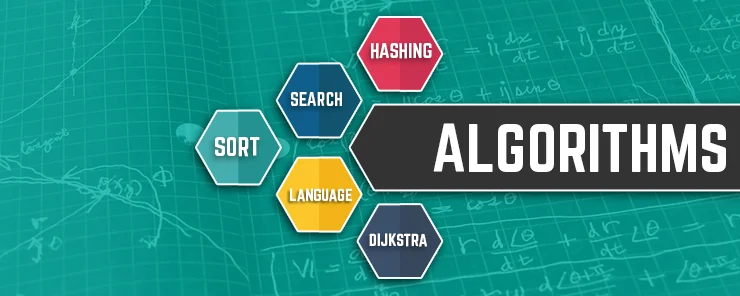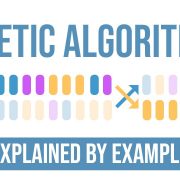Unraveling the Threads of Algorithms: A Journey through Logic and Efficiency
In the intricate tapestry of modern technology, algorithms are the unseen weavers that bring order to chaos. They are the intellectual architects behind the functionality we often take for granted in our digital lives. From search engines that uncover answers in the blink of an eye to recommendation systems that predict our preferences, algorithms are the secret ingredients that make the virtual world hum with efficiency. In this article, we’ll embark on a captivating journey to demystify algorithms and explore different types, shedding light on their inner workings with the help of creative examples.
The Dance of Logic: Understanding the Essence of Algorithms
Imagine you’re a chef preparing a sumptuous feast. Every dish requires a sequence of steps, each contributing to the final masterpiece. In a similar fashion, an algorithm is a meticulously crafted set of instructions designed to solve a specific problem or achieve a particular goal. Just as a recipe guides a chef, an algorithm guides a computer in performing tasks.
Example 1: Sorting a Deck of Cards
Let’s grasp this concept with a classic example: sorting a deck of cards. Imagine you have a jumbled deck, and you want to arrange the cards in ascending order. One simple algorithm to achieve this is the “Bubble Sort”. Here’s how it works:
1. Start with the first two cards.
2. Compare them and swap if they’re out of order.
3. Move to the next pair of cards and repeat the comparison and swap.
4. Continue this process until no more swaps are needed.
Bubble Sort is like repeatedly passing through the deck, “bubbling up” the largest card to its correct position. While it’s intuitive, it’s not the most efficient algorithm for large decks.
The Symphony of Efficiency: Performance Matters
Efficiency is the heartbeat of algorithms. Just as a symphony’s harmony relies on each instrument playing its part flawlessly, an algorithm’s performance hinges on its execution time and resource usage. Enter the “Big O Notation”, a notation that describes an algorithm’s upper bound of performance.
In simpler terms, Big O Notation helps us understand how an algorithm’s execution time grows relative to the input size. It’s like classifying the time complexity of algorithms into categories such as “constant,” “linear,” “logarithmic,” “quadratic,” and more.
Example 2: Searching in a Phone Book
Consider searching for a name in a phone book. One way is to start from the beginning and go through each name until you find the right one – this is a linear search. If there are 1000 names in the book, it might take up to 1000 comparisons in the worst case.
However, if the phone book is sorted by names, you can employ a more efficient algorithm called “Binary Search”. This algorithm leverages the fact that the list is sorted and repeatedly divides the search range in half. If you’re searching for a name, you can instantly eliminate half of the remaining names with each step. Binary Search has a logarithmic time complexity – as the input size doubles, the number of steps only increases by one.
A Tapestry of Algorithms: Diversity in Problem Solving
The algorithmic world isn’t a monolithic landscape; it’s a vibrant tapestry of diverse problem-solving approaches. Let’s explore a few more algorithm types to add color to our understanding.
1. Sorting Algorithms: Merge Sort and Quick Sort
Returning to the world of sorting, let’s meet Merge Sort and Quick Sort. These algorithms take a “divide and conquer” approach. Merge Sort splits the deck of cards into smaller sub-decks, sorts them individually, and then merges them to achieve the final sorted deck. Quick Sort, on the other hand, selects a “pivot” card, arranges the other cards around it, and then recursively sorts the sub-decks on each side of the pivot.
2. Graph Algorithms: Dijkstra’s Algorithm and Depth-First Search
Imagine you’re planning a road trip and want to find the shortest route between two cities. Dijkstra’s Algorithm is the compass you need. It helps you find the shortest path through a graph of interconnected nodes with varying distances. In contrast, Depth-First Search is like exploring a maze. It starts at a node and explores as far as possible along each branch before backtracking.
3. Genetic Algorithms
Now, let’s dive into a more intriguing realm – Genetic Algorithms. Inspired by the process of natural selection, these algorithms evolve potential solutions over successive generations to find optimal answers. Consider a scenario where you’re designing a bridge. Genetic Algorithms could explore various designs, discarding weaker ones and combining stronger elements to create an increasingly optimal bridge blueprint.
4. Dynamic Programming
Imagine you’re climbing a staircase, and you can take either one or two steps at a time. How many unique ways are there to reach the top? This is where Dynamic Programming comes in. It breaks down a complex problem into simpler subproblems and stores solutions to avoid redundant calculations. In the staircase example, you’d start by solving for the first few steps and gradually build up to the top, utilizing previously solved subproblems.
5. Machine Learning Algorithms: Decision Trees and Neural Networks
Venturing into the realm of machine learning, let’s examine Decision Trees and Neural Networks. A Decision Tree is like a game of 20 questions. It asks a series of yes-or-no questions to classify data into categories. Neural Networks, on the other hand, emulate the human brain’s interconnected neurons. They learn patterns from data and can perform tasks like image recognition, language translation, and even playing games.
6. Greedy Algorithms
Imagine you’re a coin collector trying to select coins with the highest total value from a limited set. Greedy Algorithms make locally optimal choices at each step with the hope of finding a global optimum. In the coin example, a greedy algorithm might repeatedly choose the largest available coin until it can’t add any more value.
The Ethical Fabric: Algorithmic Impact on Society
As algorithms weave their way into more aspects of our lives, questions of ethics and bias emerge. Algorithms, though impartial in nature, can inherit biases from their training data. For instance, a biased dataset can lead to biased predictions, affecting areas like hiring practices and lending decisions.
Example 3: Biased Predictions
Imagine an algorithm designed to screen job applications. If historical hiring data contains gender bias, the algorithm might inadvertently recommend male candidates over female candidates. This isn’t a flaw in the algorithm itself but a reflection of societal biases present in the data it learned from.
To create a fairer digital tapestry, it’s crucial to actively address bias during algorithm development and continuously audit and refine the algorithms.
Example 4: Facial Recognition and Privacy Concerns
Consider the use of facial recognition technology for security purposes. While it has its merits, it also raises concerns about privacy and surveillance. If misused or biased, such algorithms can infringe on individual rights and perpetuate discrimination. Striking a balance between technological advancement and ethical considerations is crucial to maintaining a just society.
The Ever-Evolving Thread: Algorithms of the Future
As technology races forward, algorithms evolve alongside it. Tomorrow’s algorithms might harness the power of quantum computing or delve into the depths of artificial intelligence. The quest for efficiency continues, driven by the desire to solve increasingly complex problems with elegance and speed.
In conclusion, algorithms are the threads that stitch together the digital fabric of our world. They dance to the tune of logic, vary in their problem-solving techniques, and hold the potential to shape society. Understanding algorithms is akin to unraveling a rich tapestry, each thread representing a step toward computational enlightenment. So, the next time you use a search engine, make a digital payment, or enjoy a personalized recommendation, take a moment to appreciate the algorithms silently orchestrating the symphony of modern technology.






